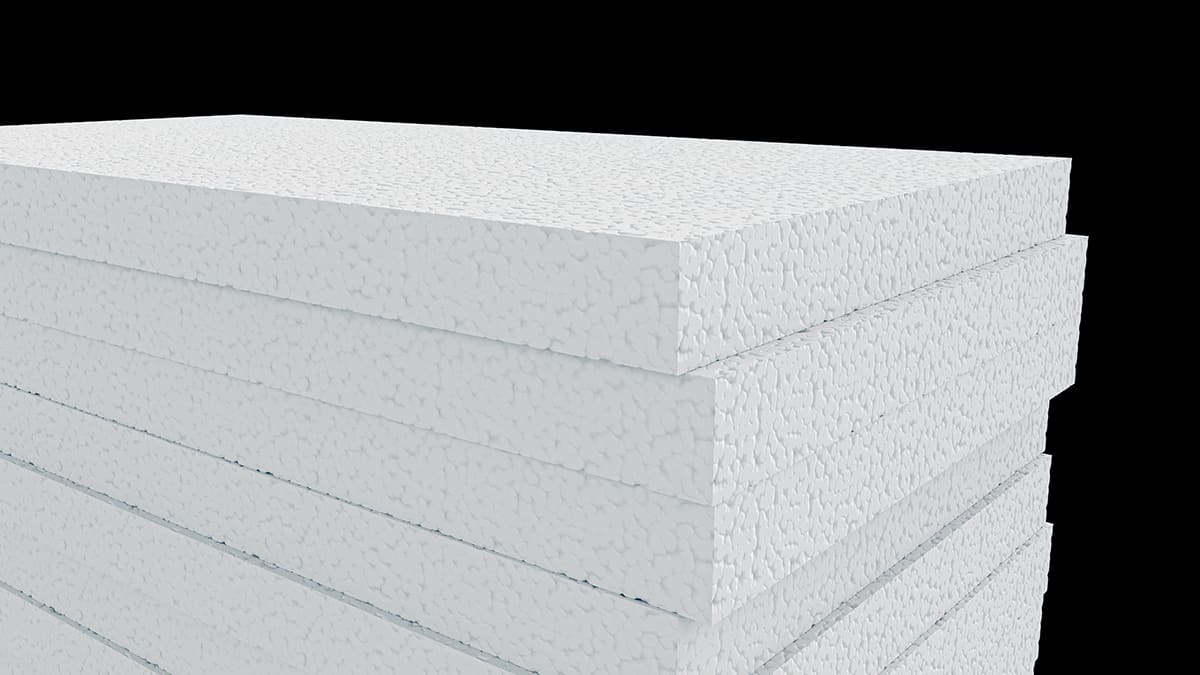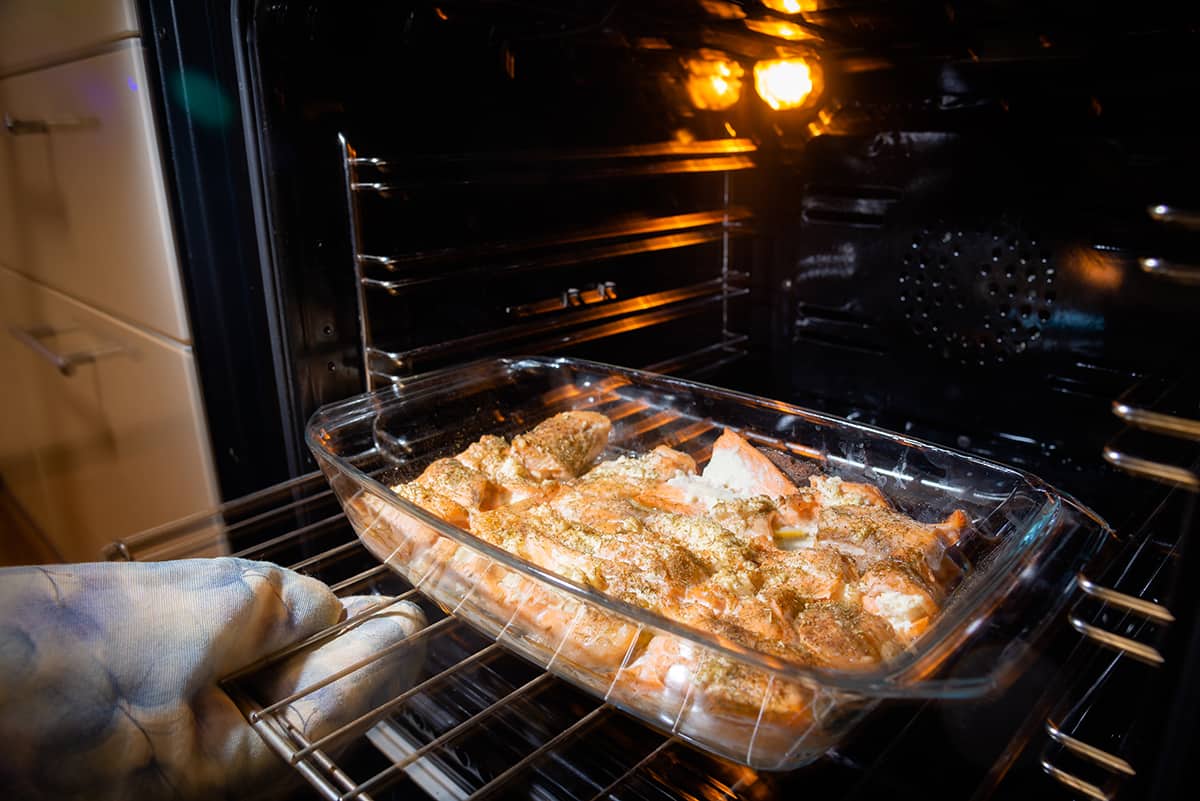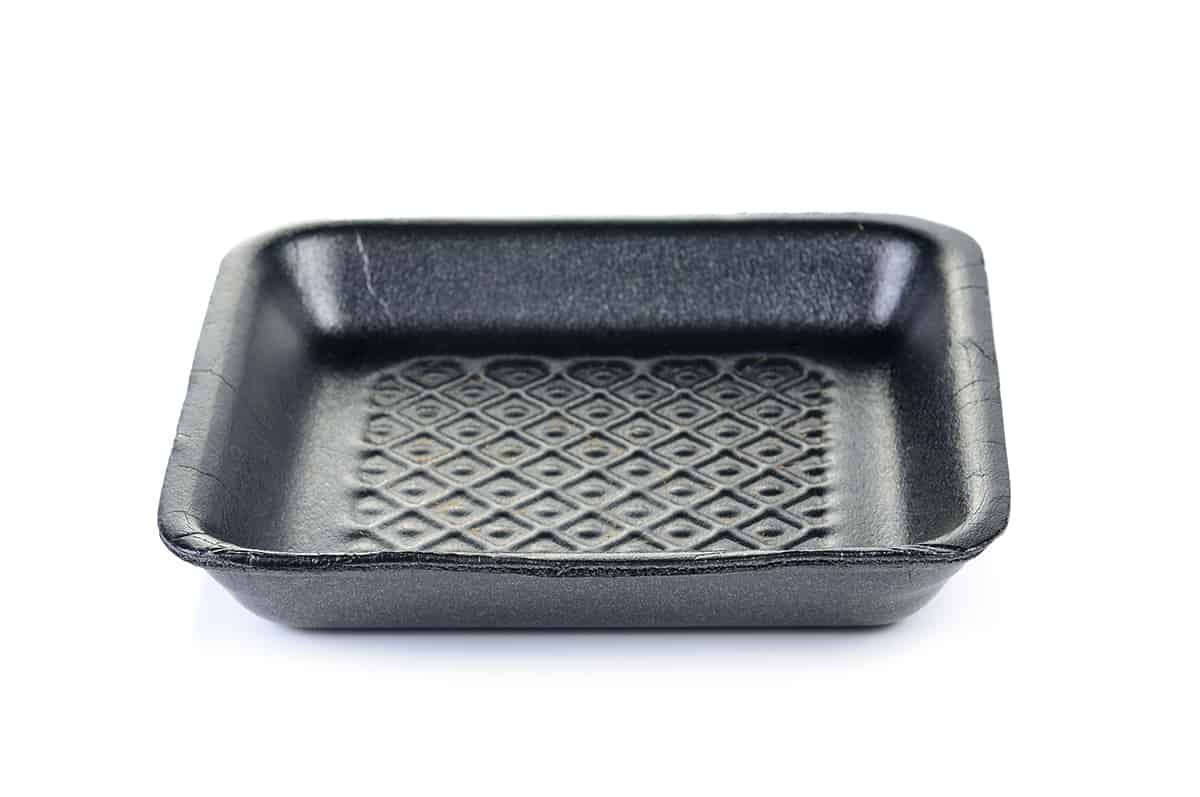Ordering takeout is great and all, but what do you do with the leftovers? If the food is stored in Styrofoam containers, you can just pop the entire thing in the fridge. But what should you do when you want to reheat your leftovers? Can you place Styrofoam containers in your oven?
No, you cannot. Styrofoam softens at around 212°F and melts at 464°F. Even lower oven temps, like 170°F, may cause Styrofoam to degrade, leaving white residue all over your food.
For the remainder of this guide, I’ll explain what Styrofoam is, what happens when you try to reheat food in a Styrofoam container, and what alternative materials are best for reheating leftovers.
What Is Styrofoam?

Styrofoam, or “Blue Board,” is a brand name for a type of closed-cell extruded polystyrene foam. It’s a manufactured insulation board that can be used for a variety of purposes, including as a water barrier or thermal insulation in buildings.
Although it is technically a light blue color, the term is universally used to describe a white polystyrene material (that is expanded). This expanded polystyrene is also sold in the form of Styrofoam sheets and Styrofoam packaging.
Styrene, a byproduct of petroleum processing, is converted to polystyrene via polymerization and the addition of a hydrofluorocarbon agent. You’ll typically find Styrofoam used as a container for food products, but it’s also a common material used in arts and crafts projects.
Can You Put Styrofoam in the Oven?
You can probably imagine how unsafe it can be to place Styrofoam in an oven.
When reheating food, the goal is to rapidly raise the temperature of the food to reduce its exposure to the danger zone (between 40 and 140°F). Meanwhile, Styrofoam begins to soften at around 212°F and will melt at 464°F. Even attempting to bake food at the oven’s lowest setting (170°F) is futile since the Styrofoam will already begin to degrade, albeit it at an undetectable degree.
What Happens When You Put Styrofoam in the Oven?
The best possible outcome of putting Styrofoam in an oven is that it will soften. However, the likeliest outcome is that the foam board will melt, contaminating your food with a sticky white residue. When this happens, it’s pointless to try and pull the white debris out of your food.
The chemical compounds in Styrofoam, such as styrene and benzene, are known to be harmful to humans and are even suspected of causing cancer. Some of the toxins in Styrofoam can be absorbed into the bloodstream if you eat or drink something hot that has been stored in the material.
The styrene in Styrofoam can leach into hot foods, alcoholic beverages, oils, and acids. Contamination and potential risk to human health are two outcomes. Tea with lemon, which can be high in acidity, should not be consumed from Styrofoam cups for this very reason. Alcoholic beverages and fruit juices should not be consumed from Styrofoam cups, either. Eating greasy food stored in Styrofoam containers is another bad idea.
This is completely different from putting hot food in a Styrofoam container temporarily. The temperature of hot food is not high enough to cause the Styrofoam’s chemical to leach into your food while exposing Styrofoam to a consistently high temperature via an oven can.
Oven-Safe Bakeware Alternatives

Instead of sticking a Styrofoam container in your oven, you should use the following bakeware materials:
- Ceramics—A clay-based pot or dish that is tempered in kilns at high heat. Make sure the ceramic dish is oven-safe, even though the majority of them are. It takes ceramic a long time to heat up, and it might not heat up evenly.
- Metal—This includes stainless steel, cast iron, and aluminum. They can withstand tremendous heat, and they generally heat up more quickly than ceramic.
- Glass—Glass is a great option, as long as it’s already been tempered. Pyrex is a classic example of oven-safe tempered glass.
Can You Put Styrofoam in a Microwave?
No, you cannot. While it’s true that microwaves do not use direct heat to increase the temperature of the container, the microwaved food will gradually become hotter, which can eventually wear down the Styrofoam’s structure.
However, there is a specific type of Styrofoam that sports a microwave-safe label. This is certainly safe to microwave, but you should refrain from using it repeatedly since the material will quickly degrade when exposed to extreme hot and cold temperatures.
How to Reheat Food
Regardless of which method you use to reheat food (oven, microwave, or stovetop), the goal should be to heat your food to at least 170°F for at least 2 minutes. Ideally, the temperature you reheat food should be the same temperature used to cook the food originally.
If you ordered takeout and don’t know at what temperature it was cooked, set your oven to 200°F, your stove to medium heat, or your microwave for 2 or 3 minutes on medium-high power. When the food has been thoroughly reheated in and out, take it out and serve.
What Foods Shouldn’t Be Reheated?

While reheating food is a great way to make leftovers edible, there are certain food products that should not be reheated.
Potatoes
It’s not that potatoes cannot be reheated per se, but exposure to room temperature for extended periods can lead to the growth of the bacteria responsible for causing botulism. Unfortunately, when that bacteria grabs hold of your potatoes, the heat of your oven or stovetop may not be enough to get rid of it.
Chicken
Like potatoes, you can reheat chicken but only if you stored it properly. This involves placing the leftover chicken in an airtight container and sticking the container in your fridge before bacteria get a chance to set in. In addition, you need to cook the entire chicken until each part reaches 175°F for at least 2 minutes. What can happen is your chicken dries out, making it virtually inedible.
Eggs
Cooked eggs do not belong in a room-temp environment. When left out for too long, foodborne pathogens would have already set in. Reheating the eggs to the right temperature will cause the eggs to become bitter in taste and slightly crumbly in texture. That doesn’t sound very appetizing, does it?
Rice
Bacillus cereus is a type of bacteria that is harmless when exposed to heat. However, when left to their own devices at room temperature, they’ll release spores that aren’t just toxic but also resistant to heat. You can safely reheat rice by microwaving it until it reaches 170°F. This usually involves stirring the rice once or twice. It’s a lot easier to make a new batch of rice than it is to bring life back to leftover rice.
Seafood
Seafood is a bit tricky since even spending a tiny amount of time at room temp can lead to rapid bacteria growth. You can reheat seafood by heating it up to 170°F for 2 to 3 minutes, but if it’s been sitting on your countertop for more than 60 minutes, you should just toss it away.
Can You Reheat Food Multiple Times?
If for whatever reason, you couldn’t finish your leftovers in one sitting I advise throwing them away. Not only does re-reheating food destroy its texture, but any trace amounts of nutrients you hoped to absorb from the old food would have turned to smithereens.
With that said, it’s possible to reheat previously reheated leftovers. Simply follow the instructions described in the previous section to make sure it’s not exposed to the danger zone for too long.






